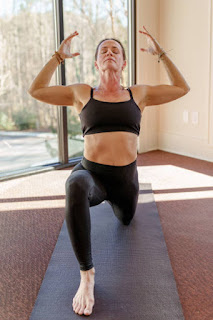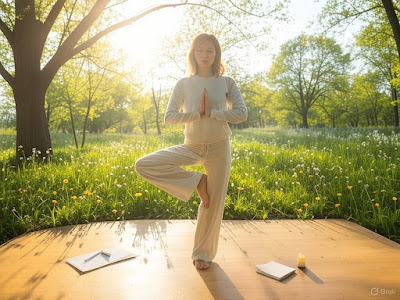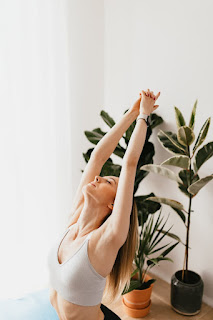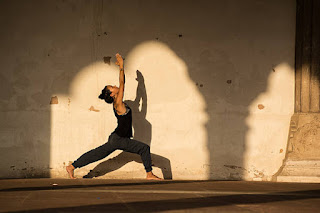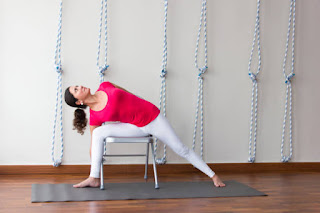Meditation for Mental Agility: Boosting Creativity and Problem-Solving Skills
Meditation for Mental Agility: Boosting Creativity and Problem-Solving Skills
In today’s world, creativity and problem-solving skills are essential—not only in creative professions but also in daily life. Whether you’re an artist, a writer, an entrepreneur, or simply someone seeking to bring more innovation into everyday tasks, mental agility can be a game-changer. One powerful way to cultivate these skills is through meditation. Specific meditation practices, such as open monitoring and visualization, can increase mental flexibility, enhance divergent thinking, and create a mindset that allows us to enter the elusive “flow” state more often.
This article explores how meditation can help you achieve and maintain flow, which is essential for creativity and productivity. We’ll discuss what flow is, how it feels, and what’s happening in the brain during this state, followed by meditation techniques that foster the mental environment needed to reach it.
Understanding Flow: What It Is and How It Feels
Flow is a psychological state where we become fully immersed in a task, losing track of time and outside distractions. Psychologist Mihaly Csikszentmihalyi, who pioneered research on flow, describes it as being “in the zone.” It’s a state where our focus narrows, and we experience effortless concentration, allowing creativity to flourish and complex tasks to feel more manageable. When we’re in flow, we’re more productive, our creativity spikes, and we feel deeply satisfied with our work.
Flow isn’t just a mental phenomenon; it’s a physical experience as well. In flow, we often feel relaxed yet alert, calm yet energized. In the brain, flow activates the prefrontal cortex, responsible for complex decision-making, while reducing activity in the default mode network, the part of the brain associated with self-criticism and overthinking. Flow is accompanied by a release of dopamine and endorphins, which enhance motivation and improve mood, further encouraging us to stay immersed in our task.
How Meditation Enhances Creativity and Problem-Solving
Meditation helps us develop the mental agility needed to enter flow more frequently. By training our minds to focus, tune out distractions, and tap into inner creativity, meditation creates an environment conducive to flow. Let’s look at two meditation practices in particular—open monitoring and visualization—that are especially effective for enhancing creativity and problem-solving.
Open Monitoring Meditation
Open monitoring meditation is a practice that involves observing thoughts, emotions, and sensations without attachment or judgment. Rather than focusing on a single point, as in concentration meditation, open monitoring invites you to let thoughts come and go freely. This practice fosters divergent thinking—the ability to generate multiple solutions to a problem—by allowing the mind to explore various ideas without constraint.
Studies show that open monitoring meditation reduces activity in the default mode network, quieting self-criticism and allowing creative thoughts to surface without inhibition. In other words, open monitoring trains us to embrace our natural thought flow without restriction, which is essential for creative problem-solving.
Guided Tip for Open Monitoring Meditation:
- Find a Comfortable Seat: Sit comfortably and close your eyes.
- Notice Your Breath: Begin by focusing on your breath to settle the mind.
- Open Your Awareness: Gradually expand your awareness to include any thoughts, emotions, or physical sensations that arise.
- Observe Without Judgment: Instead of engaging with any particular thought, let each one drift by. If you notice patterns or creative ideas arising, simply acknowledge them and let them go.
By practicing open monitoring, you can increase mental flexibility and adaptability, both of which are crucial for achieving flow in creative work and problem-solving.
Visualization Meditation
Visualization meditation is another powerful tool for fostering creativity and focus. This practice involves mentally visualizing specific scenarios or outcomes, helping us connect with our goals and unlock creative insights. Visualization enhances convergent thinking—the ability to bring different ideas together to solve a specific problem—by directing our focus and stimulating the brain regions associated with motivation and reward.
Visualization is particularly effective for those seeking to reach flow states because it creates a clear mental image of success, making it easier to stay motivated and aligned with one’s goals. Visualization meditation has been shown to increase dopamine levels, which enhances our motivation to pursue goals and can lead us into flow more easily.
Guided Tip for Visualization Meditation:
- Set a Clear Intention: Think about a specific goal or project you’re working on.
- Create a Mental Image: Picture yourself achieving this goal or successfully working on the project. Imagine the environment, the process, and the satisfaction of completion.
- Engage Your Senses: Visualize not only what you see but also how it feels, sounds, or even smells.
- Hold the Image with Confidence: Focus on this mental picture for several minutes, allowing yourself to connect with the emotions of success.
Visualization meditation can enhance problem-solving by helping you “see” solutions before they fully materialize. This practice builds the mental clarity needed for flow, especially when facing complex or challenging tasks.
Entering Flow with Daily Meditation Practices
Incorporating meditation into your daily routine can help you reach flow more regularly, improving your creativity and problem-solving abilities across all areas of life—whether it’s in your career, hobbies, fitness, or even day-to-day activities. Here are some daily practices to help integrate flow:
- Morning Open Monitoring Session: Start your day with a 5-10 minute open monitoring meditation. This short session can help clear mental clutter and create a fresh mindset for tackling creative projects.
- Visualization Before Creative Tasks: Before starting a challenging task, spend a few minutes visualizing yourself completing it successfully. Imagine yourself in flow, fully immersed in the task, and feeling confident in your abilities.
- Evening Reflection: In the evening, take a few minutes to reflect on moments of flow throughout your day. Acknowledge when you felt most engaged, and use this awareness to create more opportunities for flow.
How Meditation Cultivates Divergent Thinking and Mental Agility
Meditation not only helps us reach flow but also fosters the mental traits needed to stay there. Creativity often requires divergent thinking, or the ability to think in unconventional ways and explore multiple ideas. Divergent thinking is essential in fields like writing, design, entrepreneurship, and problem-solving, where innovative solutions and fresh perspectives are key.
By quieting the mind and reducing self-criticism, meditation allows our ideas to flow freely, increasing our capacity for creative thinking. Research indicates that regular meditation can lead to a “loosening” of thought patterns, where the brain becomes less rigid and more open to new ideas and associations. In other words, meditation allows us to “think outside the box” by reducing mental blocks and habitual thought patterns.
Feeling Flow in the Body
Flow isn’t just a mental state—it’s a full-body experience. When we’re in flow, we feel energized, focused, and completely present. Physiologically, the body releases dopamine and endorphins, enhancing both pleasure and focus. The result is a feeling of lightness and ease, where even challenging tasks feel manageable.
In meditation, especially open monitoring and visualization, we cultivate this bodily awareness, creating the conditions for flow to emerge. Through practice, we become more in tune with our body’s signals, making it easier to recognize and tap into flow during various activities.
Applying Flow to Different Areas of Life
The benefits of flow extend beyond creative work. By developing mental agility and focus through meditation, we can access flow in almost any activity:
- Work: Meditation helps maintain focus, handle complex problems, and avoid distractions, allowing flow to emerge naturally during challenging tasks.
- Fitness: Flow enhances physical performance by syncing body and mind. Meditation practices that cultivate focus and awareness can improve endurance, coordination, and enjoyment in exercise.
- Hobbies: Whether it’s painting, playing music, or gardening, flow allows us to fully immerse ourselves in activities we love, making them more fulfilling and rewarding.
- Daily Life: Flow can transform ordinary activities like cooking or cleaning into mindful, enjoyable experiences. Meditation helps us stay present, turning mundane tasks into opportunities for engagement.
Achieving Flow through Meditation
Meditation is a powerful tool for fostering the mental flexibility, focus, and creativity needed to reach flow. By incorporating open monitoring and visualization practices into your routine, you can train your mind to enter flow states more frequently, enhancing your problem-solving skills, creativity, and overall enjoyment of life.
The journey to flow doesn’t require perfection or drastic changes; it’s about building small, consistent habits that gradually enhance your mental agility. As you practice meditation, remember that flow is an evolving state—one that becomes more accessible the more you cultivate focus, awareness, and openness in your daily life.

